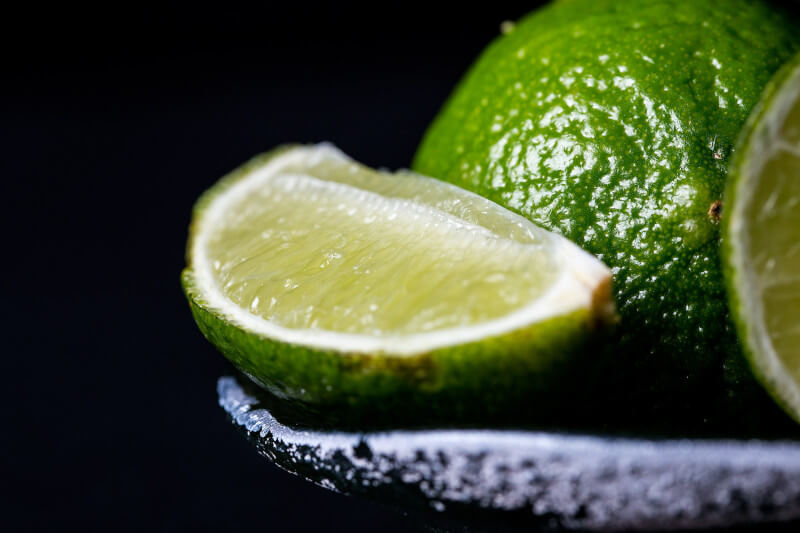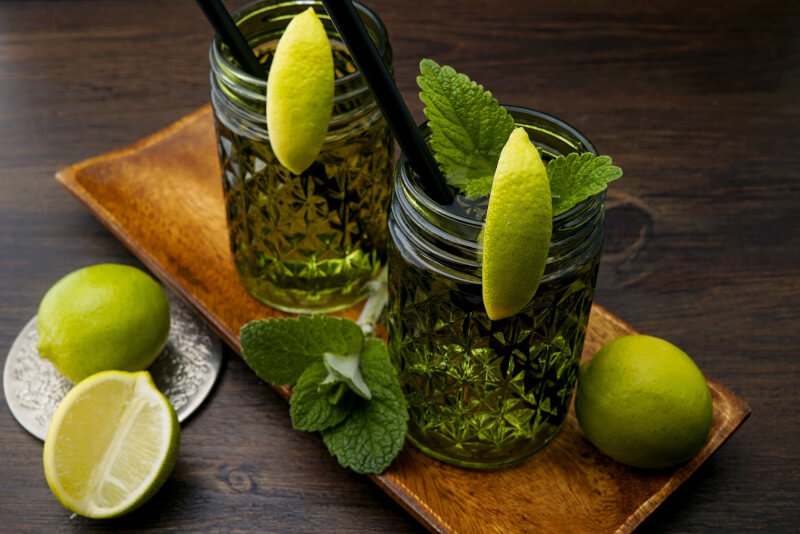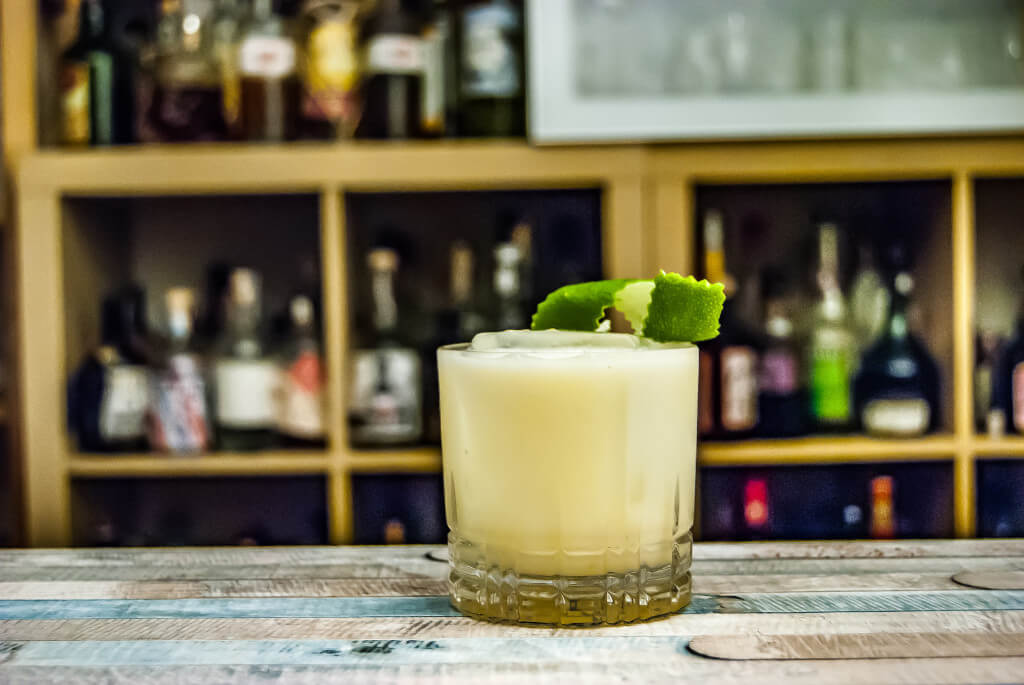The Margarita is thoroughly enjoyed by many across the globe. However, the standard cocktail recipe is not necessarily waste-free. Making the most eco-friendly Margarita requires careful consideration of several factors, including the sour component (typically lime juice, with the rest of the fruit discarded), the agave spirit (which raises serious concerns about sustainability), and the sweetener (which raises its own set of sustainability concerns).
Making a drink that uses fewer resources without wasting as much requires juggling many factors, each of which has its considerations. But before getting into the nuts and bolts of how to prepare a low-waste Margarita, it’s important to understand what exactly is meant by “low-waste.”
Louisville, Kentucky businessman Nickle Morris, who also runs a pub, gives “low waste” a Native American spin in light of his history. “It’s not using something that I don’t need and using every part of the things that I do,” he says. Everything I do is put to good use in this. “Cute new recipes just for the sake of being ‘low waste’ aren’t nearly as important as the carbon footprint of glass [packaging], stillage, and citrus,” says the author. The word “low waste” describes a practice that reduces negative impacts on the environment.
Although the bar industry is notoriously wasteful, in recent years, bartenders have been making concerted efforts to reduce their impacts on the environment, such as their carbon footprint and the amount of trash they send to landfills. The result is a shift towards greener practices in the bar business.
Experts in the beverage business who care deeply about the environment have offered recommendations to prevent any aspect of environmental responsibility from being overlooked. These tips cover a wide range of topics, from demanding more transparency from alcoholic beverage companies to making the most of your citrus.
Care Should Be Used When Choosing Your Base Spirit
There are two ways to consider environmental impact when selecting an alcohol base for your Margarita. Traditional tequila and its earthier relative mezcal are both available, among other choices.
The sustainability of the sector is especially threatened by agave spirits. Overharvesting of agave plants is a concern because of the high annual consumption rates. Growing an agave plant takes at least seven years. However, it is crucial to know what questions to ask and where to go for answers to choose a brand or bottle that is more ecologically friendly.
“Tequila has concerns that are similar to those associated with any other spirit category,” Morris says. He recommends considering the distiller’s ethics when selecting a tequila or mezcal. Morris emphasises the significance of social and cultural concerns in addition to the imperative of restoring and maintaining the land on which the agave is cultivated.
Sustainable farming practices allow agave growers to produce crops indefinitely while minimizing their impact on the environment. Many distilleries have this as their ultimate goal. Tequila Ocho is one such company that is ahead of the curve since it uses fewer pesticides in the agave fields it cultivates and recycles the fiber remnants left over from crushing agave pias, also called agave hearts. Many employees at Ocho come from long lines of previous employees.
After distillation is complete, a solid residue called stillage is left behind in the still. It’s important to think about how businesses handle their stillage beyond just agricultural implications. “It’s caustic and usually toxic, and most distilleries just dump it,” Morris says. As the saying goes, “It’s just a waste product.” The Patrón distillery “does an excellent job treating theirs,” while the Sombra mezcal distillery “has made significant progress” by employing stillage to decompose human waste in outhouses in rural Mexico. There are a lot of factors to think about, but if you put in the effort to learn about them, you can shop more ethically.
Use That Lime to Its Full Potential
When creating a Margarita, the lime is usually the most wasteful item. In most beverages, just the juice is consumed, while the pulp and skin are thrown away. The consequence is a mountain of fruit husks in the trash bin after taco night at home and a mountain every night in a typical bar.
However, there are many other options besides citrus juices for giving drinks that desired tang. To maximize the yield of citrus juice, you can play with the acidity of your components, incorporate lacto-fermented meals, or utilise other techniques to reuse citrus peels and rinds.

Morris has developed “Super Juice,” a process that uses technology to squeeze at least one liter of juice out of ten limes. This amount is around four times as much as you would get from a conventional juicer if you used the same number of limes.
Like an oleo saccharum, he starts by creating an oleo citrate. To do this, you’ll need to macerate citrus peels in acid granules. The waste products of this process are blended with water to produce an unspoiled citrus juice substitute. Morris claims that oleo citrate has six to ten times the flavor of fresh juice despite having the same amount of acid as the juice.
He squeezes the limes for their juice, then combines it with oleo citrate to make “Super Juice,” a waste-free citrus solution that tastes even better than the original. When used in cocktails, shaking has the same effect as using freshly squeezed lime juice.
Or Use a Less-Wasteful Lime-Juice Alternative
- Replace lime juice with something less wasteful, or go for the 4-star Super Juice Margarita.
- An alternative strategy would be to do away with the lime altogether and find a better, more efficient way to generate acidity.
London’s Kol Mezcaleria’s signature Margarita features yuzu sake and verjus in addition to the traditional mezcal, triple sec, and simple syrup. The resulting cocktail will be unique and delicious. “We had a few ideas in mind when developing our house Margarita,” says Matt Varona, Kol’s beverage manager, who was previously mentioned. The author explains that they were looking for an approach that wouldn’t have to skimp on quality while yet being able to serve clients rapidly, produce little waste, and have a unique but well-balanced flavor profile. This is a significant request, considering the vast quantities of margaritas consumed at both the bar and the eatery.
Varona explains, “To achieve this, we had to exclude fresh citrus from the mixture.” Instead, the lemony flavor comes from yuzu sake, and verjus is added to increase the drink’s acidity. For environmental reasons, the crew only purchases verjus in 5-liter bag-in-boxes.
The Kol Zero-Lime Margarita

To come up with a fresh take on the classic “Margarita,” the bartenders at Native, a London restaurant that prioritizes sustainable cuisine, use ingredients from the area. “Our menu, for both drinks and food, has always been dictated by the land and produce available,” says Imogen Davis, co-founder of Native, describing the restaurant’s hyper-seasonal approach to food procurement. According to Davis, this has always been the situation since the eatery opened. We can replace the citrus in a traditional Margarita with sea buckthorn, a local delicacy, to get the necessary acidity for our Sea Buckthorn Margarita. Margaritas have even been served with ant tails as a garnish. Davis claims that the formic acid created by the ants gives the drink a “citrusy pop.” Also, don’t forget the sugar!
Questions You Should Be Asking
There are a few options for making your Margarita as eco-friendly as possible, depending on whether you favor Tommy’s Margarita style (made with agave nectar) or the traditional form (made with orange liqueur). In his opinion, “Curacao is a major consideration,” Morris says, “with a few things to take into account similar to tequila.”:
- In what sort of container did it come?
- Did that curious object come with its glass case?
- Where does the base alcohol come from, and how is it distilled?
- What kind of sugar substitute is used?
- Where did you get the citrus peels that you used to make the flavor?
- Were the employees treated with respect and given ethical pay and benefits?
Brandy from the Copper and Kings distillery in Louisville is used in Morris and his staff at Bar Expo’s homemade curaçao. Although this method is time-consuming and expensive, it provides him with the assurance that the curaçao he uses is produced morally.
Agave Nectar
Agave nectar (used in Tommy’s Margarita) is another choice for sweeteners, although its high fructose concentration makes it unsuitable for some drinkers. In many cases, you can use a honey syrup created in your area for agave nectar. The lime peels can be used to produce a citrus cordial or oleo saccharum in place of Super Juice. It’s a clever approach to give the drink a more prominent citrus taste while also adding sweetness to counteract the acidity. You don’t have to be making Super Juice to use lime peels to make regular juice.
Davis’s prior employment experience included collecting citrus trash from area restaurants for Native. The bar turned the discard into a blood-orange liqueur that was utilized to make a special holiday version of the Margarita. “Creating low-waste twists just requires a little bit of thinking outside the box,” Davis says.

